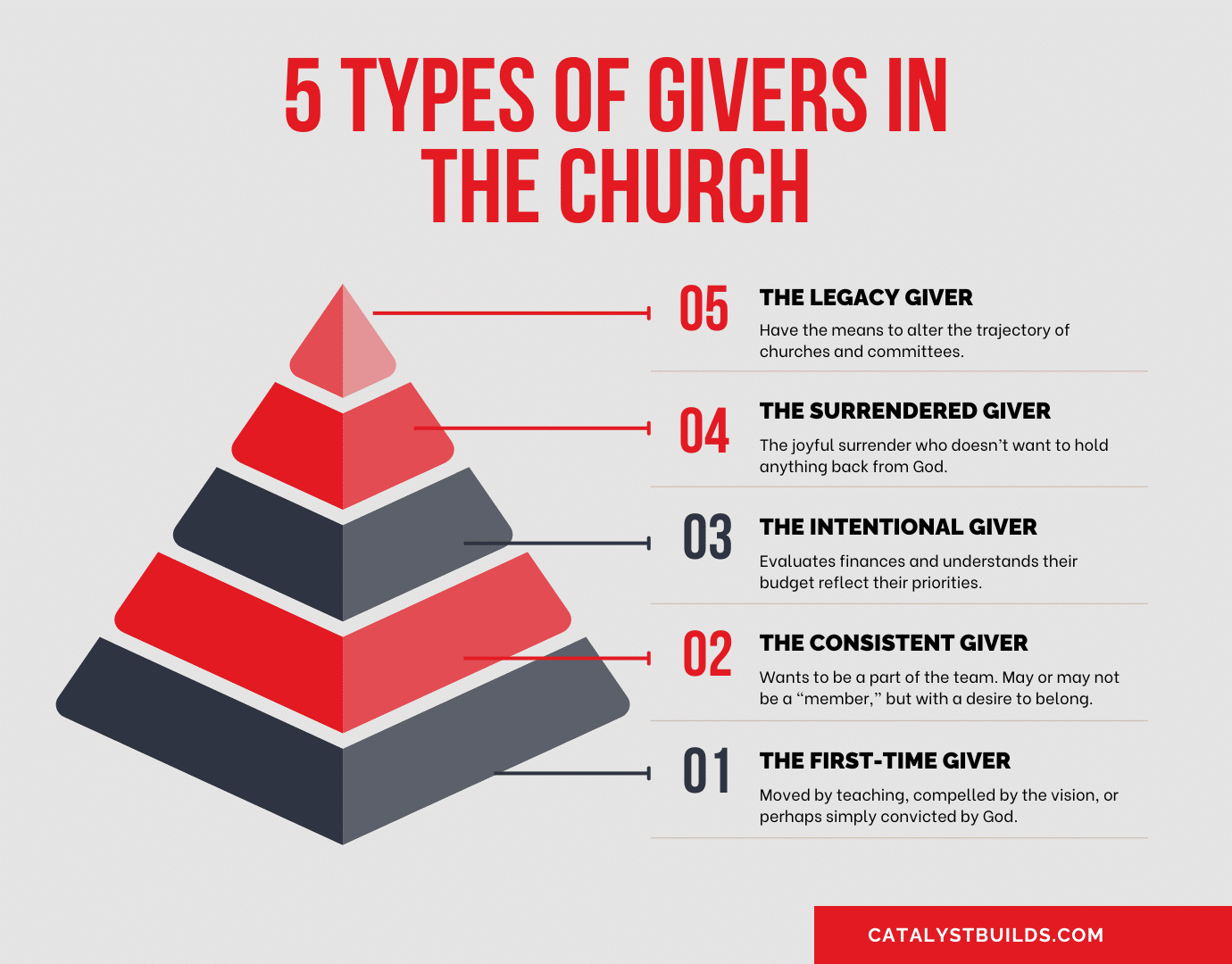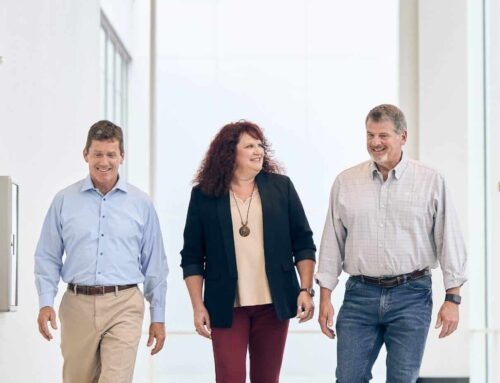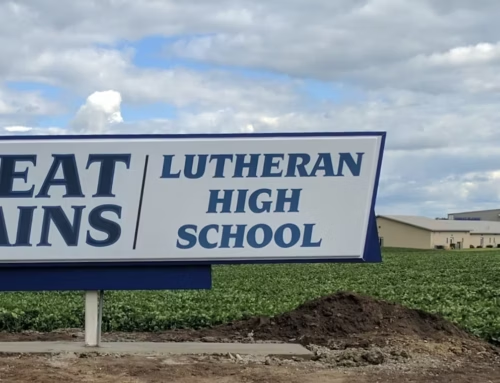Financially generous and sacrificial people can impact the world in significant ways. Church construction projects that bless communities require financial backing.
If you have a God-sized vision for your church – and your community – you will need to know how to encourage the entire congregation to take the next step in their giving journey.
Some pastors shy away from discussing money. This is understandable. You don’t want people to think the church only cares about money, and you don’t want to be greedy. However, you’ll have difficulty teaching people to follow Jesus without discussing money.
Church thought leader Carey Nieuwhof says, “Jesus talked about money and possessions more than any other topic other than the Kingdom of God.”
Skilled leaders understand that not everyone is at the same place in their giving journey. Do you want to help different types of givers in the church move forward? Then you need to meet people where they’re at and provide clear, actionable steps to empower them to grow in generosity.
Understanding the 5 Types of Givers in the Church
In his book, The Generosity Ladder, Nelson Searcy points out that every person is at a unique stage in their discipleship. I have found that there tend to be five major categories that most people fall into. If you can connect with each, you’ll be on your way to maximizing your impact.
1. The First-Time Giver 💡
This is someone who decides to give for the first time. They may have been moved by teaching, compelled by the vision of a capital campaign, or perhaps simply convicted by God.
This person doesn’t have a long-term, comprehensive plan for financial generosity. They are responding to a prompting in a moment. That’s a good thing!
To fan that spark into a flame, provide them with an achievable next step. If they are made to feel like the only way they can contribute to the church capital campaign is by giving a tithe or more, they could shrink back and not give anything. Or if they give a smaller amount, they may feel ashamed.
They shouldn’t.
Any step of faith in financial generosity must be celebrated!
- Recognize and encourage them with a thank you letter from the pastor.
- Let them know this is the first step in a long, exciting journey.
- Ensure they understand how their gift is essential for the church to achieve its goal.
2. The Consistent Giver 📅
This is someone who decides to give on a regular, committed basis. Often, they will set up recurring donations through your giving platform. They may give in person, but that requires even more intentionality.
The consistent giver is the person who wants to be a part of the team. They may or may not be a “member,” but they desire to belong. Because of this, they commit to financially supporting the church’s vision and ministry.
A capital campaign is an excellent opportunity to encourage the consistent giver to take another step in their discipleship. Consider challenging the consistent giver to go above and beyond their current level of giving and contribute to the capital campaign as well.
The short-term nature of a capital campaign can provide a reasonable next step for people in their giving journey. Since the impact of giving during a capital campaign is quick and tangible, people are often inspired to continue to grow in generosity.
How can you spur on the consistent giver?
- Thank the consistent giver for their ongoing faithfulness.
- Honor the steps of faith they’ve taken to this point in their giving journey.
- Encourage them to deepen their discipleship by joining a small group.
Invite them to take their next step by joining a financial class, like Financial Peace University.
3. The Intentional Giver 🤔
This person comprehensively evaluates their finances. They understand that their budget reflects their priorities. They ask questions like, “Why am I giving more to AT&T than God? Should I give God more than my mortgage company each month?”
These are big questions! Don’t expect that everyone can or should be at this point in their giving journey. Some people would have to be unfaithful with their current financial obligations to give at this level. It takes time to get here, and the process shouldn’t be rushed.
For those who are intentionally giving, a capital campaign can be the impetus they need to obediently respond to God’s invitation to take a step.
What does the intentional giver need to take their next step?
- Be clear and direct. Remind them of God’s faithfulness to this point in their journey.
- Cast vision for how they can continue to grow in aligning their hearts with God’s priorities.
- Connect them to someone who is a step ahead of them on the giving journey.
4. The Surrendered Giver 🏳️
At this stage in the giving journey, a person is less concerned about what they are giving and more concerned about what they are not giving – and why. They’ve come to a place where they recognize that the cost Christ paid on the cross requires giving God 100% of their lives.
They joyfully surrender. They don’t want to hold anything back from God. The surrendered giver has seen how giving has changed them. They have prioritized their lives based on what they give, not what they spend. God gets their first and best; “AT&T” gets the rest.
Often, the joy of generosity has so gripped their hearts that they look to give more than finances. They evaluate all of their resources – cars, investments, properties, business services – and seek to offer them to God to expand the Kingdom however God determines.
Wisdom is required to speak to this giver. They may not be financially wealthy. Consider the story of the widow who gave two pennies. Jesus said she gave more than the rest because she fully surrendered everything she had.
When encouraging the surrendered giver to take the next step in their giving journey, remember that it’s not about outward appearances. It’s about the heart.
- Invite them to spend time in prayer over their finances.
- Encourage them to revisit their budget to ensure it reflects their deepest priorities.
- Celebrate the work God has done in their lives to bring them to this point.
5. The Legacy Giver ✝️
In some ways, the legacy giver is in a category all their own. It’s “off the charts.” The leaders at Catalyst Construction embody our value of stewardship by living as legacy givers.
Legacy givers have the heart – and the means – to alter the trajectory of churches and communities. These are the kind of people who must keep an eye on percentages – so that they don’t give too much to one place – and overwhelm the organization.
They may be in your church.
The legacy giver doesn’t need to be challenged to give more. They want to give more and usually seek opportunities to do so. They shouldn’t be shamed for having the means they do. Being wealthy isn’t a problem. Loving wealth is. And that issue plagues the rich and the poor alike.
How can you encourage a legacy giver in their giving journey? Invite them to consider leveraging their generosity to help others in their giving journey.
Perhaps they could provide a matching gift, mentor others, or fund the expenses to run a successful capital campaign.
Acknowledge that you may have legacy givers in your church – and they are a gift – not their money! Let them know there are multiple ways they can maximize their impact in your church and community for generations to come.
Let Giving in the Church Today Build a Brighter Tomorrow!
You can lead your church to grow in generosity. We can help. Our team has guided hundreds of churches through successful building projects.
As a former executive pastor, I take this personally. I would be honored to help you understand and acknowledge the five types of givers in your church, meet them where they’re at, and encourage them to take the next step.
You don’t have to expect the initial giver to be a surrendered giver – at first. You wouldn’t expect a toddler to enjoy The Brothers Karamazov, right? Growing in generosity is a process. Celebrate every step that everyone takes!
With each win that you celebrate, momentum will only grow. In the end, you’ll accomplish far more than constructing a church building. You’ll build a joy-filled, generous community that will leave a legacy for generations to come.
Ready for a guide on your journey of generosity? Reach out today to get started!






